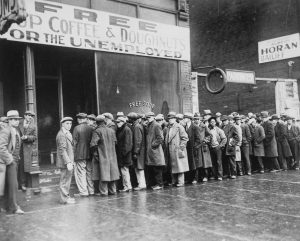Although the 1920s were characterized by prosperity for some, it was also an era of deep inequality. By 1929, the wealthiest five percent of America’s population received one third of all income. Eventually, steep economic imbalances, paired with unregulated stock market speculation, led to financial disaster. The American stock market crashed on October 29, 1929, plunging the U.S. and most of the Western world into a deep economic depression. The Wormsers seem to have had enough wealth to not be affected by the crash, and the final payment for Elaine’s bedroom was made in June 1930. However, they undoubtedly took notice of the changes unfolding around them. Businesses shuttered, and banks failed; by 1932, one out of every four American workers were unemployed.
The Great Depression
